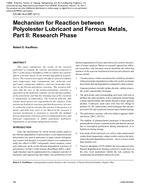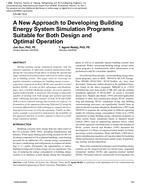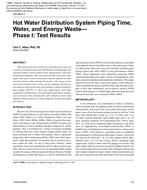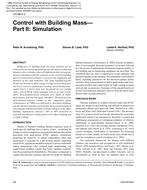-
-
Available Formats
- Options
- Availability
- Priced From ( in USD )
-
Available Formats
-
- Immediate download
- $16.00
- Add to Cart
Customers Who Bought This Also Bought
-

CH-06-14-4 (RP-1211) - Mechanism for Reaction between Pol...
Priced From $16.00 -

CH-06-13-4 - A New Approach to Developing Building Energy...
Priced From $16.00 -

CH-06-03-3 - Experiments for the Characterization of Desi...
Priced From $16.00 -

CH-06-04-1 - Hot Water Distribution System Piping Time, W...
Priced From $16.00
About This Item
Full Description
Reductions in building peak electrical demand can be achieved by incorporating building-specific models of thermal dynamics into controllers that will implement short-term peakperiod curtailment of HVAC capacity or pre-cool the building prior to peak-period cutbacks to increase the magnitude and duration of the load reduction. The same building-specific model can be used to effect energy savings by providing optimal- start control or optimal-pre-cooling control during unoccupied hours. Control logic was developed for pre-cooling with a central HVAC plant equipped with an air-side economizer. Measurement-based estimates were made of chiller performance and internal-gains schedules. The general transient- thermal-response model of the companion paper (Armstrong et al. 2006) was then used to determine buildingspecific thermal response and estimate the seasonal benefits of several peak-shifting and night-cooling strategies in the office building. Simulations showed a 30% to 60% reduction in seasonal mechanical cooling loads in the office building due to night cooling.
Units: Dual






